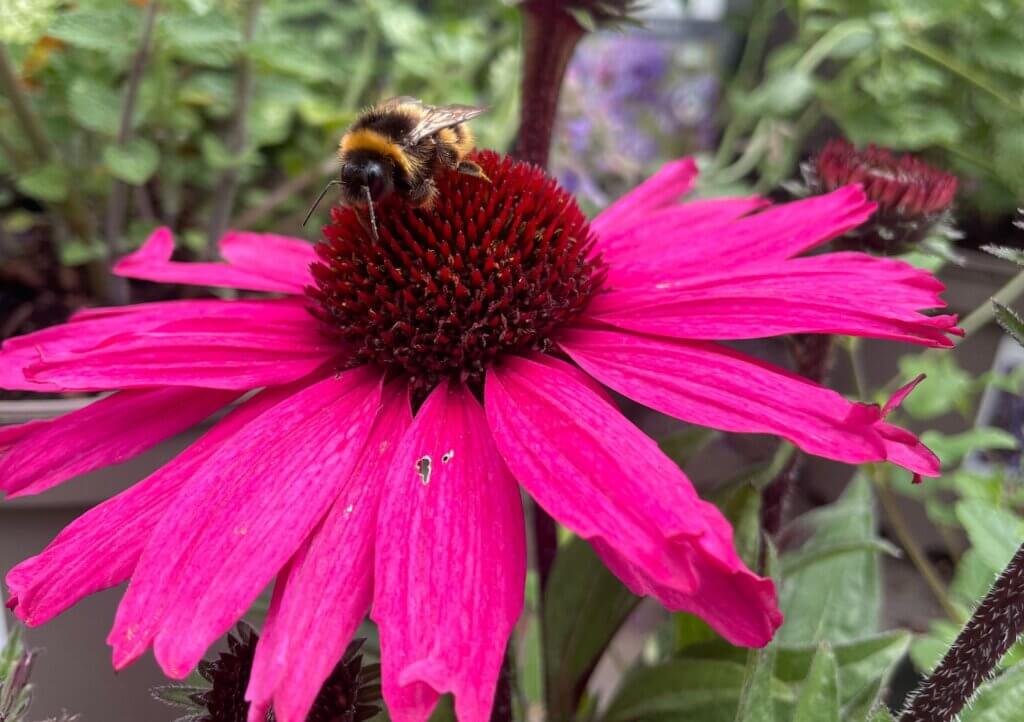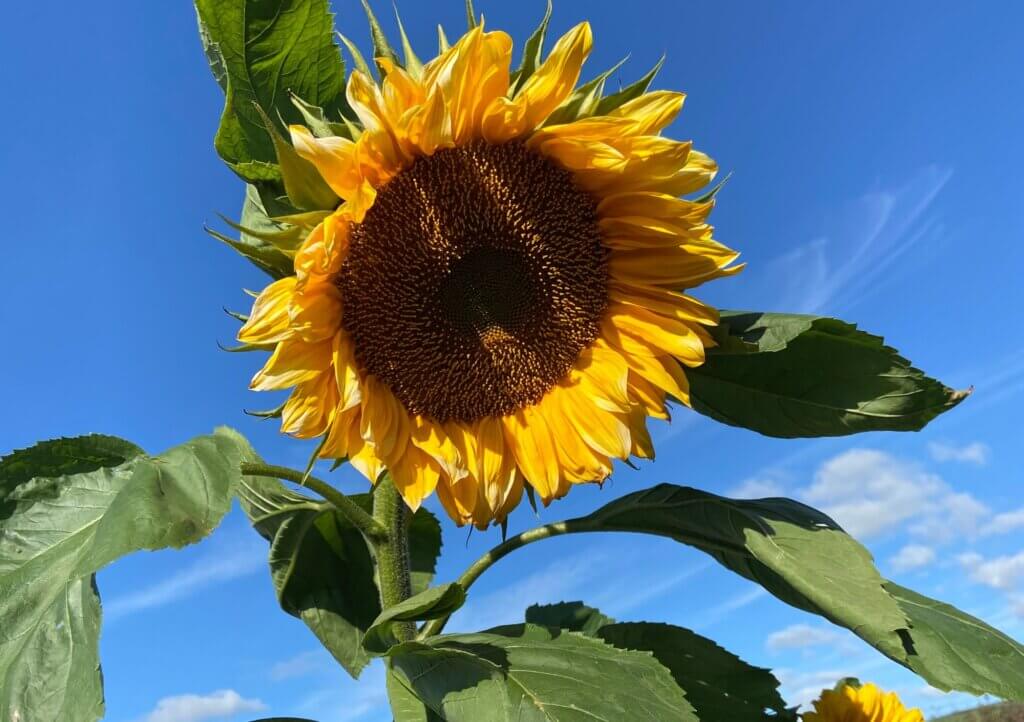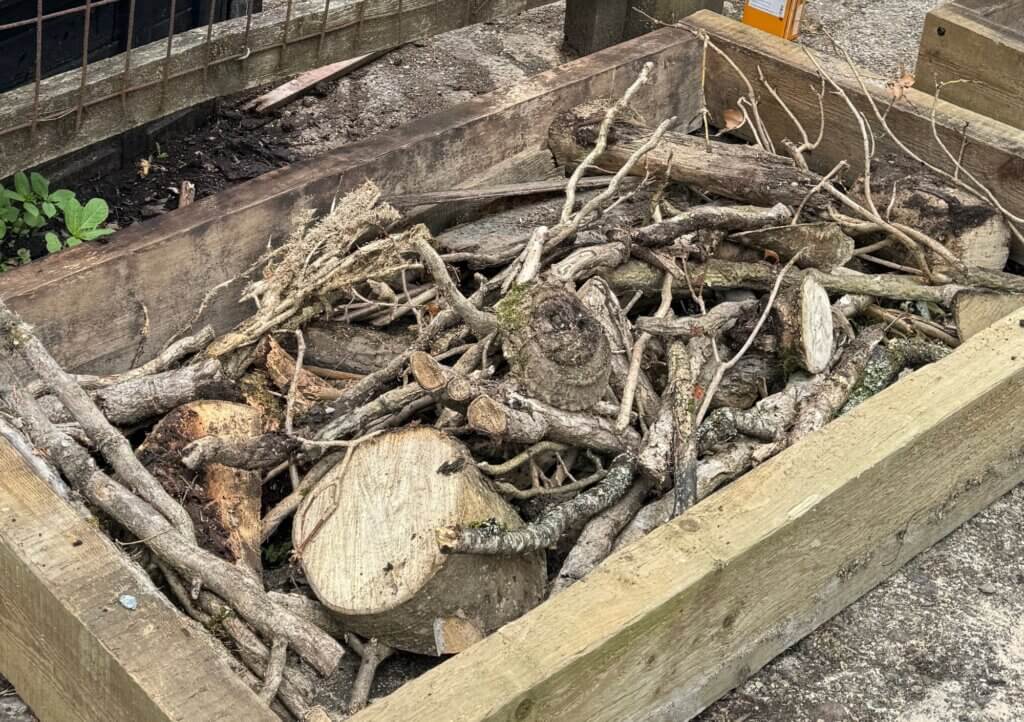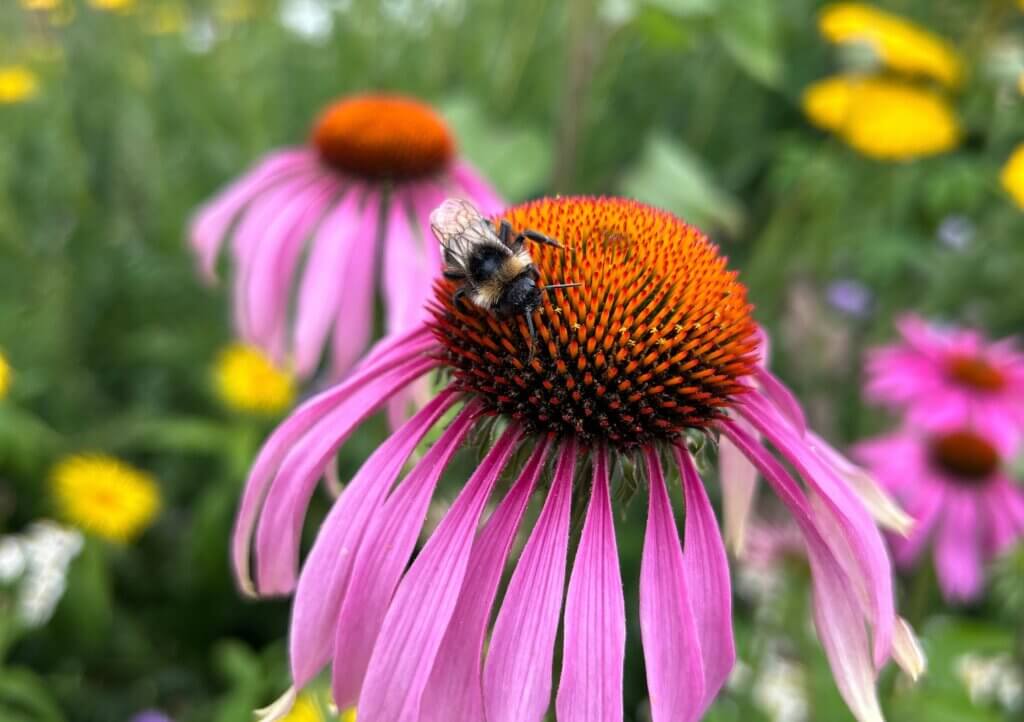Creating a wildlife-friendly garden is one of the most rewarding things you can do as a gardener. Not only does it support vital pollinators and local ecosystems, but it also brings your garden to life with birdsong, butterflies, and bees buzzing happily among the blooms. It becomes a haven not only for you and your family, but for the local creatures too!
Whether you’re working with a small patio or a sprawling back garden, there are plenty of ways to make your space more attractive to wildlife. Here’s everything you need to know to get started.

Why Create a Wildlife Garden?
Pollinators such as bees, butterflies and hoverflies are crucial for our food systems and natural biodiversity. Sadly, many of these species are in decline due to habitat loss and overuse of pesticides. Creating a garden that welcomes wildlife can help reverse this trend – plus, it’s beautiful and beneficial for your plants too.

What to Plant in a Wildlife Garden
1. Open-Faced Flowers
Ideal for honeybees and hoverflies, these flowers offer easy access to nectar and pollen.
Try: Rudbeckia, single-flowered dahlias, cosmos, marigolds, and sunflowers.
2. Bell-Shaped Blooms
These suit longer-tongued bees like bumblebees.
Try: Foxgloves, penstemons, and campanulas.
3. Clusters of Tiny Flowers
Loved by butterflies and beneficial insects like lacewings and ladybirds.
Try: Verbena bonariensis, sedum, yarrow, and achillea.
4. Night-Scented Plants
Attract moths and other nocturnal pollinators.
Try: Evening primrose, jasmine, night-scented stock, and honeysuckle.
5. Seed and Berry-Producing Plants
A crucial winter food source for birds.
Try: Hawthorn, rowan, holly, pyracantha, and teasels.

Going Beyond Plants: How to Create a Wildlife Habitat
Build Natural Shelter
Think about integrating things like:
Log piles and deadwood: Ideal for beetles, frogs and hedgehogs.
Bug hotels: Encourage solitary bees, ladybirds and lacewings.
Hedgerows and shrubs: Provide nesting spots for birds and hiding places for mammals.
Provide a Water Source
Whether you only have space for something small or a haven for a whole host of wildlife.
A small pond, birdbath or even a shallow dish can offer vital hydration.
Add stones or twigs for smaller creatures to land safely.
Let Nature Take Over (a Little!)
Leaving areas of your garden all year around for wildlife to make nests, forage for food and enjoy is vital.
Leave a corner of your garden to grow wild – long grass, nettles and brambles offer essential cover and breeding grounds for insects and hedgehogs.
Avoid pesticides and weedkillers wherever possible.
Tips for a Thriving Wildlife Garden
Plant for every season – Ensure there’s something in flower from early spring to late autumn.
Go native – UK native plants are often the best food source for native insects, plus, they’re more likely to thrive in our climate.
Mix it up – Use a variety of flower shapes, heights, and scents to appeal to different species.
Be patient – It may take a little time, but wildlife will come!
At St. John’s Garden Centre, we’re passionate about supporting pollinators and helping gardeners like you make a real difference. Visit us in Barnstaple or Ashford to explore our wide selection of wildlife-friendly plants, wildflower seed mixes, bird feeders, bug hotels and expert advice.

